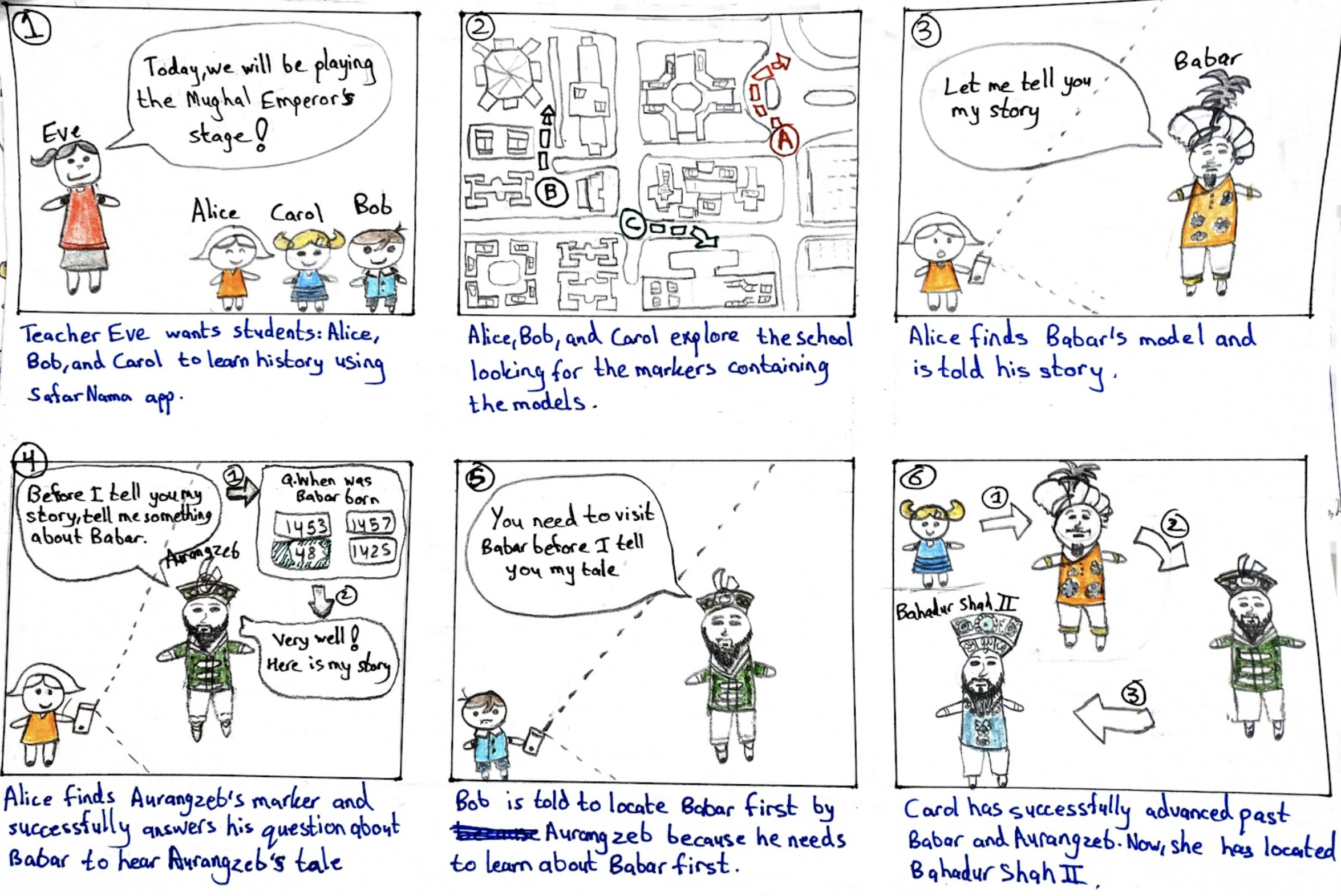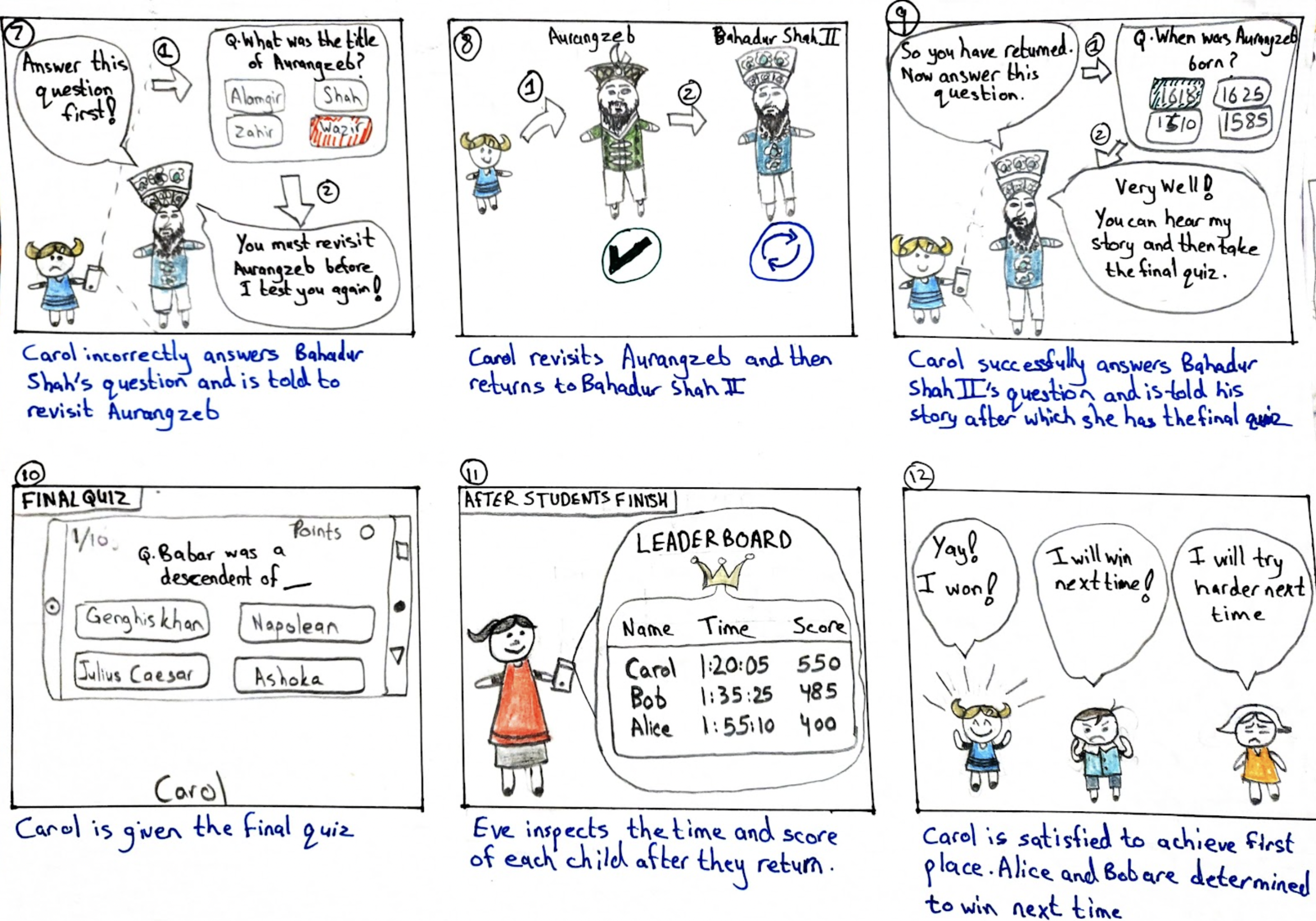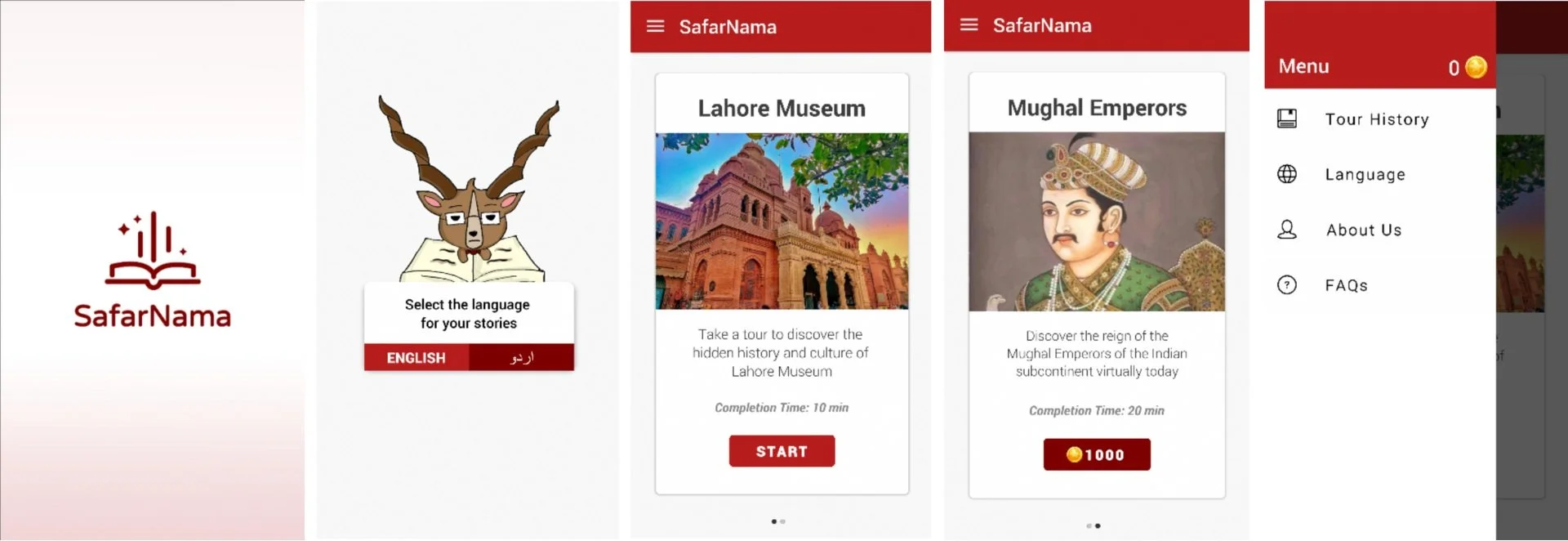SafarNama
SafarNama (Travelogue) is a mobile AR application with a novel approach to learning history and culture for Pakistan through gamified virtual trips using historically relevant 3D exhibits and an event-based dialogue system.
Role
User Design, Prototyping, Field Research, Usability Testing
Team
Noverah Khan, Zoraiz Qureshi, Hamza Farooq, Farrukh Rasool, Ahmed
Tools
Figma, Smoothie-3D, Miro, Camera
Timeline
6 Weeks
Background
Given the traditional teaching methods and lack of educational physical trips amid the COVID-19 pandemic, technology in education can be used as a solution to influence and motivate students within Pakistan to learn actively. With SafarNama’s unique design, the application aims to promote story-based, interactive and spatial learning as well as parental and teacher involvement and physical activity for children as they engage on virtual tours. We further analyze and review our design solution through an extensive user evaluation phase to determine its impact and implications for future research.
Research
After the secondary research, an extensive user research was conducted involving online surveys for children (aged 5-12) and parents, individual interviews (semi-structured and unstructured with probing) of parents and teachers inclusive of expert reviews from the teachers and a focus group for children in our target user group.
The online surveys provided us with quantitative data from primary users. 450 responses were recorded for the children survey, while the parent's survey received 62 responses. The interview questions focused on the reasons for the lack of interest in History and Culture by children as well as the usefulness of potential solutions and how different learning methods could be used. All interviews were conducted virtually via Zoom and phone calls. The focus group was conducted to understand the problems children faced as well as the viability of potential solutions. Students from grades 6 and 7 were split and randomly sampled into two equal-sized groups for two separate activities. The focus group involved testing the concept of virtual trips using a basic prototype for the test group against textual learning from books for the control group. In the first activity, the students were given a video tour of Lahore Museum along with a museum guide like explanation. In the second activity, the students were given a write-up on Lahore Museum which they were instructed to read. The students, in each group, were given a short quiz that was based on their activity and the results of both activities were evaluated.
Ideation
Storyboarding
Prototyping
After sketching out our ideas and creating storyboards for our design solution, we came up with wireframes. After 3 to 4 iterations, we came up the following final prototypes.
Screens 1-5: User Logs in, selects a language and begins a virtual tour of the Lahore Museum. Within the Museum, the user selects a specific era or topic (e.g., Mughal Emperors). The Menu tab shows Tour History, Language, About Us and FAQs.
Screens 6-10: User views their Tour History, About US and FAQs in the Menu Tab and then gets the Magic Sheet (for AR marker scanning).
Screens 11-14: The app’s cute Mascot Makhnu the Markhor appears, introduces himself and asks the user to find the exhibit markers and scan each. Makhnu will assist the user throughout the tour.
Screens 15-19: As soon as the user scans a marker, an exhibit appears (e.g., Queen Victoria). She tells her story and major life events and then asks the user to find the next exhibit (ie., Tipu Sultan). The user finds the next marker, scans it, Tipu Sultan appears and tells his story and then presents the user with a short quiz. The user has to answer the quiz correctly in order to move ahead with the tour. After successfully completing the quiz, another Mughal Emperor automatically appears (Bahadur Shah) to keep the user engaged in the story.
Screens 20-24: The user keeps on finding exhibits, listening to their stories and solving quizzes on them to ensure knowledge retention. At the end of the tour the user attempts one final quiz.
Screens 25-26: After successfully solving the quiz, the tour ends and the user earns points. The user’s progress gets saved and can be viewed from the Tour History option in the Menu tab.
Testing
To evaluate our prototypes, we conducted 17 usability tests (including pre-test and post-test questionnaires) with school children aged 5-12. We got the following insights from the tests:
Most users appreciated the features and functionality provided by the app. They were excited about the use of Augmented Reality and 3D models which provided an element of interactivity.
Marker identification was somewhat complicated.
In case a quiz was not successfully completed, some users found it difficult to identify what needed to be done.
Conclusion
Overall, the application provided a unique and interesting solution towards improving the interest of children in history and culture. With the restriction on physical trips and outdoor activities due to the lockdown of schools in the COVD’19 pandemic, children have been confined to their homes for months without any school or family trips. Through our user research we also discovered that even without the lockdown, there was a lack of education trips and also the fact that these trips were not beneficial to the students due to the lack of an engaging experience. Additionally, the lack of active learning in schools and over dependence on the classical form of teaching has left a void in the learning experience of children and led to a declining interest in history related subjects. Thus, the project was a rewarding experience for us as well as the children.










